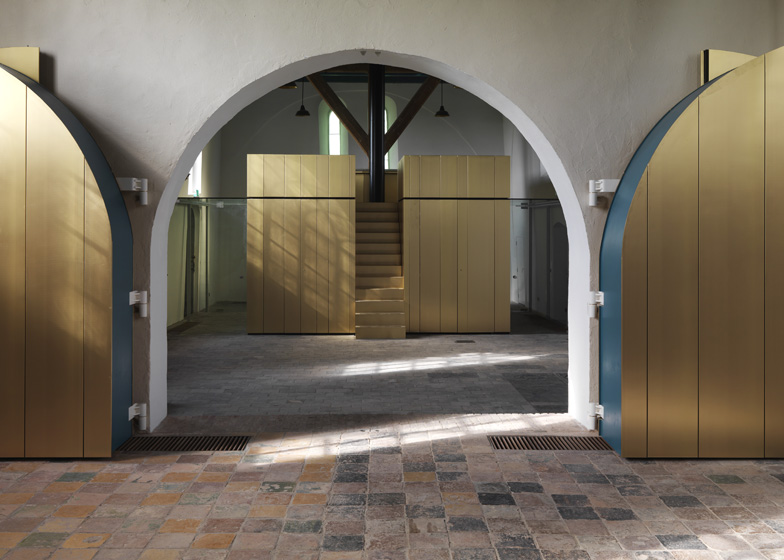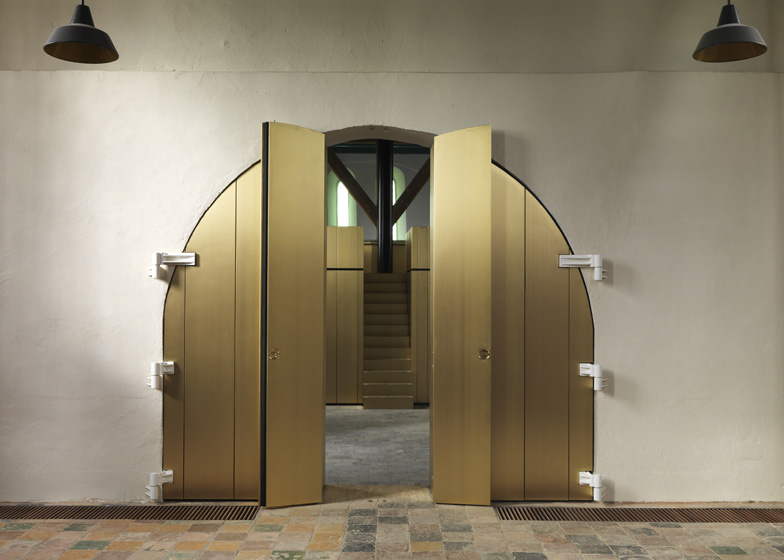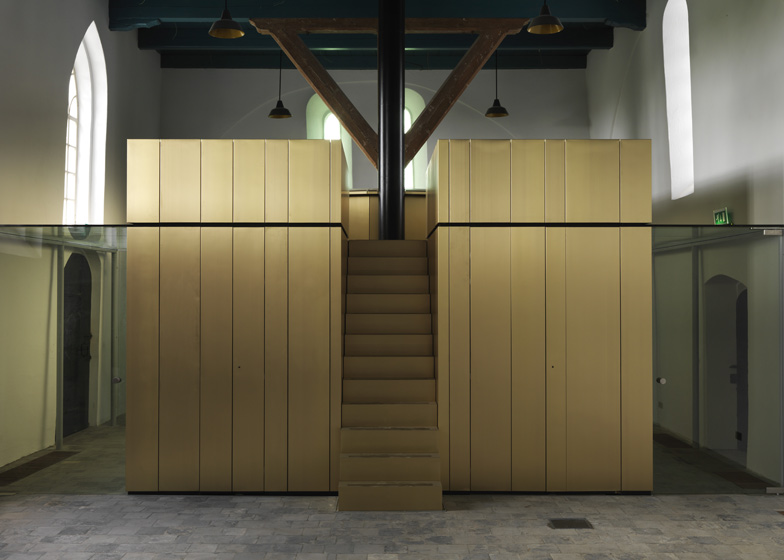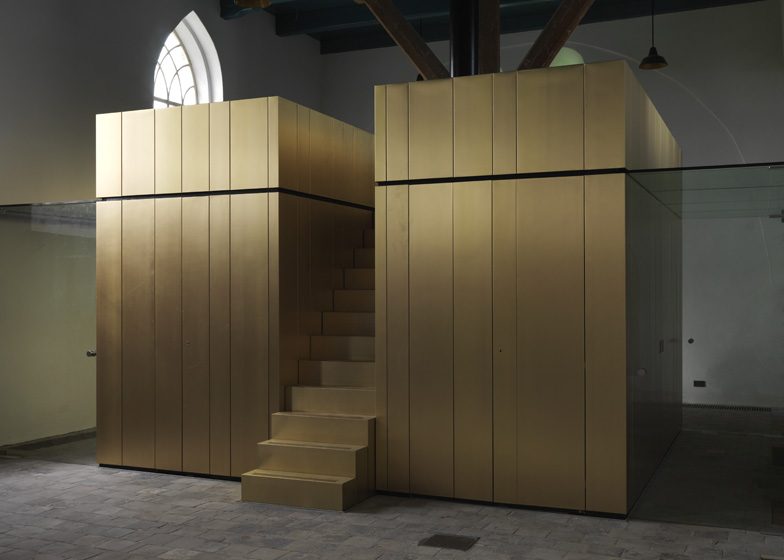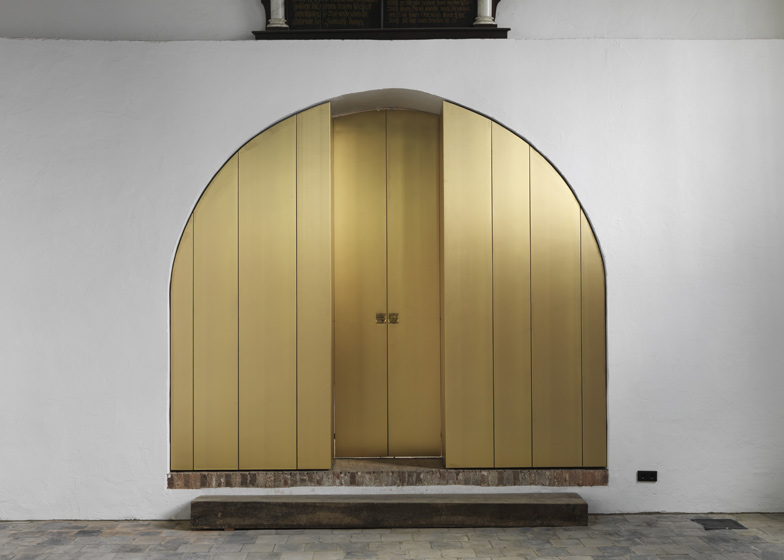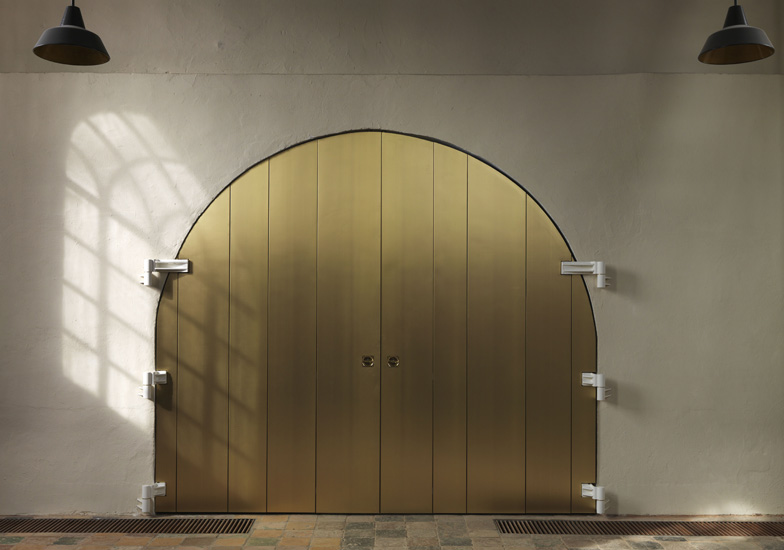Belgian studio AWG Architecten added pivoting golden cabinets and a golden platform to adapt an old church into a cultural centre in the Dutch village of Leegkerk (+slideshow).
Leegkerk Church dates back to the thirteenth century, but the local community felt that in the present day it would better serve the village as an centre for education, exhibitions and conferences.
AWG Architecten chose to leave the existing interior mostly unchanged, but added a series of interventions to allow flexible use of the church's two large rooms.
The first addition is a freestanding golden cube, a two-storey metal-clad structure in the centre of the church's nave that can function as a pulpit, a stage or a viewing platform. Toilets and a kitchen are relocated inside it, while a staircase ascends through its middle to reach the upper level.
Architects Jan Verrelst and Maarten Verdonschot told Dezeen: "The golden colour of the material, a copper-aluminium alloy, grew into the project as a result of the search for a material versatile enough to refer to ecclesiastical architecture."
The architects also installed glass doors on either side of the cube to enclose a new meeting area tucked behind.
The pivoting golden cabinets were added between the nave and altar, where they double-up as room dividers.
Other recent church renovations on Dezeen include the conversion of a fourteenth century chapel with skeletons in its basement and a Romanesque church with a new marble podium. See more renovations on Dezeen.
Photography is by Harold Koopmans.
Here's some more information from AWG Architecten:
Leegkerk Church, The Netherlands: Interior Renovation Completed
Renovation work on the interior of Leegkerk church has been completed. awg architecten has designed a new education and exhibition space, a conference room and polyvalent areas in, on and around a freestanding golden cube inside the monumental church.
The historic Leegkerk church, a national monument, dates from the thirteenth and sixteenth centuries. It was originally conceived as a place for contemplation, assembly and refuge on high ground. Leegkerk church is inextricably linked to the locale and to the people of the province of Groningen.
The foundations "Stichting Oude Groninger Kerken" and "Bijzondere Locaties Groningen" realised that Leegkerk church merited a new function as a centre for appreciation of the environment and their (cultural) history. The foundations saw that the church needed to be integrated into their (super)regional recreational/educational networks. Furthermore it was essential that the church retain its original, "traditional" multifunctional spaces for social, cultural and spiritual activities. The range of facilities and their quality - both technical and 'emotive' - necessitated preeminent treatment. The architecture firm awg architecten, from Antwerp, designed a new interior to achieve these ends and to add a new layer to the church's long and significant history.
The aim of the plan was to come up with a design for multiple functionality. Certain (prosaic) additions that are necessary for the church's infrastructure are now housed in a free-standing volume that was constructed to be as compact as possible: a golden cube, a treasure chest as it were, a shrine.
New (revolving) golden cabinets between the nave and the choir function as rotating room dividers. Ample space for modern pursuits is reconfirmed thanks to these additions. Setting the cube at the centre of the church, detached from any walls, defines functional zones and maximises spatial experience. Placing the education and exhibition space on top of this volume, accessible by an almost monumental staircase, accentuates its broad range of possible functions. From this "balcony/stage" it is possible not only to oversee the church interior but also to overlook the landscape of Groningen from an entirely new perspective.

